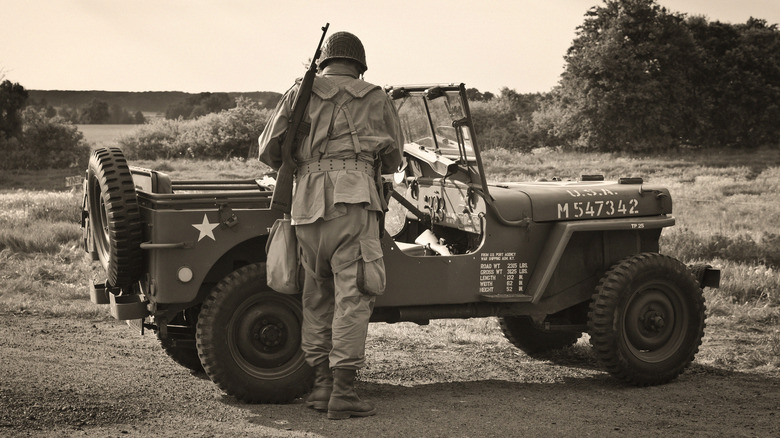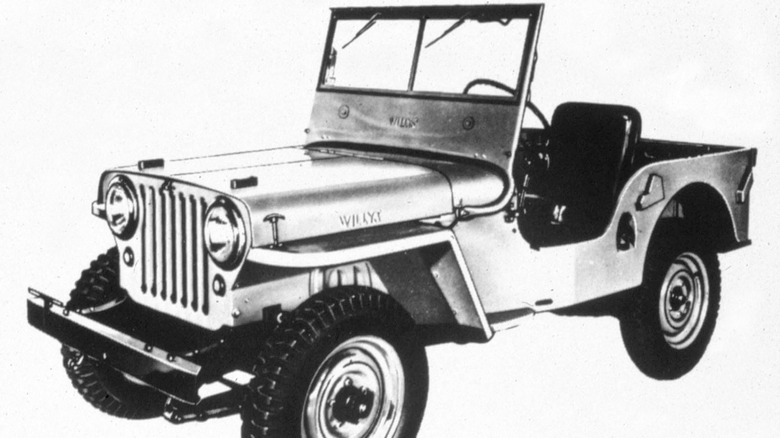How WWII Helped Build The Jeep Empire We Know Today
Jeeps are among the most popular and recognizable SUVs on the road. The first civilian Jeep evolved from a military vehicle that was engineered in response to a request by the U.S. Army during World War II, which wanted a light-duty versatile four-wheel drive vehicle to replace the motorcycles and modified Ford Model As currently in use. In June 1940, the Army invited 135 vehicle makers to put forth their bids and issued a list of requirements for the vehicle, which included specifications for the vehicle's wheelbase, capacity, height, seating configuration, and perhaps most importantly, that it have an engine that would run smoothly from three to 50 miles per hour.
Initially, Bantam Motor Company and Willys Overland were the only two manufacturers to submit bids, but soon Ford joined the competition. Jeep built the Willys Quad, and Ford created the GP Pygmy as their prototype. All three manufacturers delivered 70 vehicles to the Army in the Summer of 1940 for testing.
The following year, the Army requisitioned 1,500 vehicles from each of the three makers, and the name "Jeep" evolved from the Ford moniker, "GP" which stood for "General Purpose." Eventually the stronger motor in the Willys made its vehicle the Army favorite, and the Jeep became instantly popular with soldiers for its durability and versatility. Chaplains used the flat hood as an altar, GIs heated rations on the exhaust manifold, and troops drained hot water from the radiator in order to shave.
Willys marketed the CJ to farmers after the war
When the war ended in 1945, Willys produced the first civilian Jeep model, the CJ-2A, advertising it to famers and construction workers. Like the Quad, it had a flat hood and no doors, but boasted a tailgate, spare tire, external fuel cap and a few other refinements. The CJ-2A had a four year lifespan, giving way to the CJ-3A in 1948. The new model retained the original's L-head four-cylinder engine but upgraded the windshield to a one-piece design.
Significant changes came in 1953 with the introduction of the CJ-3B, including a new engine — the Hurricane F-head four-cylinder — and a taller grille to make room for it. That year, WIllys was sold to Henry Kaiser, paving the way for the introduction of the CJ-5 in 1954. The CJ-5 remained in production until 1984, which makes it Jeep's most enduring model in the brand's long history. In 1970, Kaiser sold Jeep to American Motors, which in turn sold the nameplate to Chrysler in 1987.
AMC created the Cherokee and Wagoneer SUVs, models which Chrysler (now part of the Stellantis group) has reimagined and re-introduced in recent years. Meanwhile, the CJ-5 and CJ-7 eventually grew into the Wrangler, likely Jeep's most recognizable model.
Together, these vehicles have combined to make Jeep the sixth best-selling auto brand in the United States more than 80 years after the first GI climbed into a Willys Quad.

